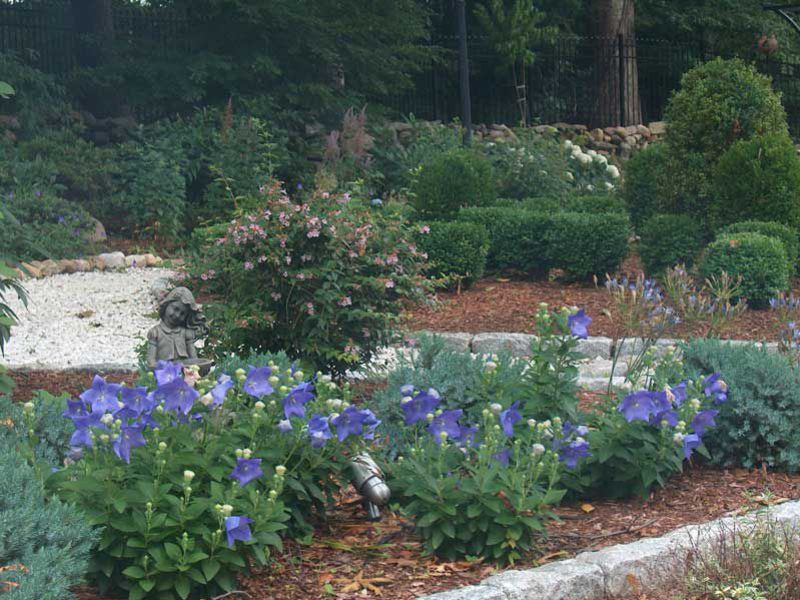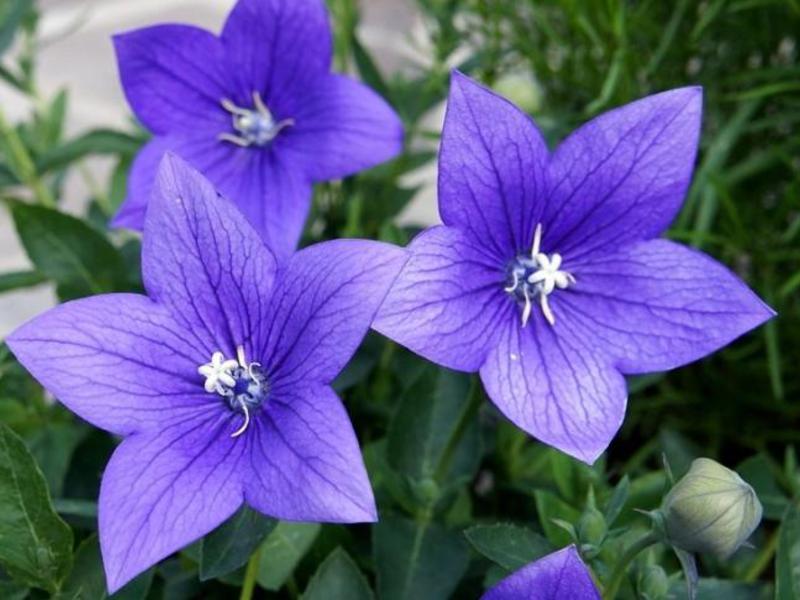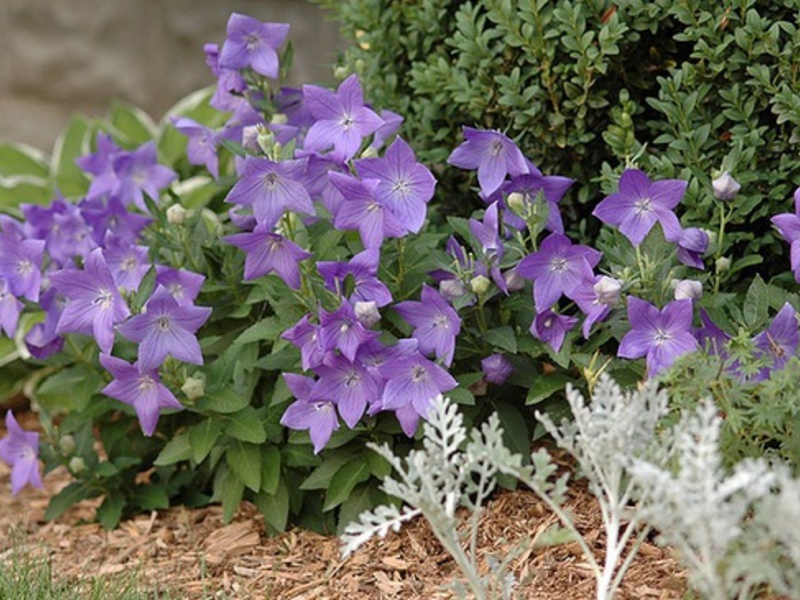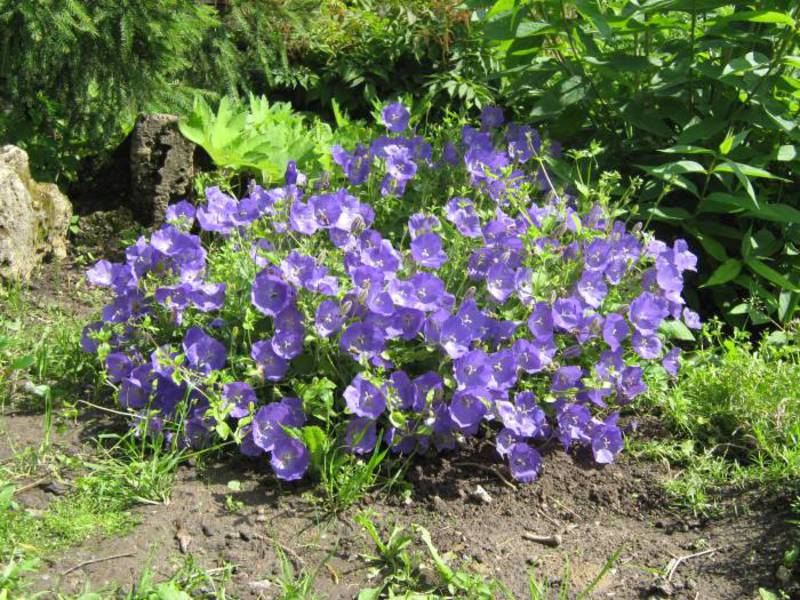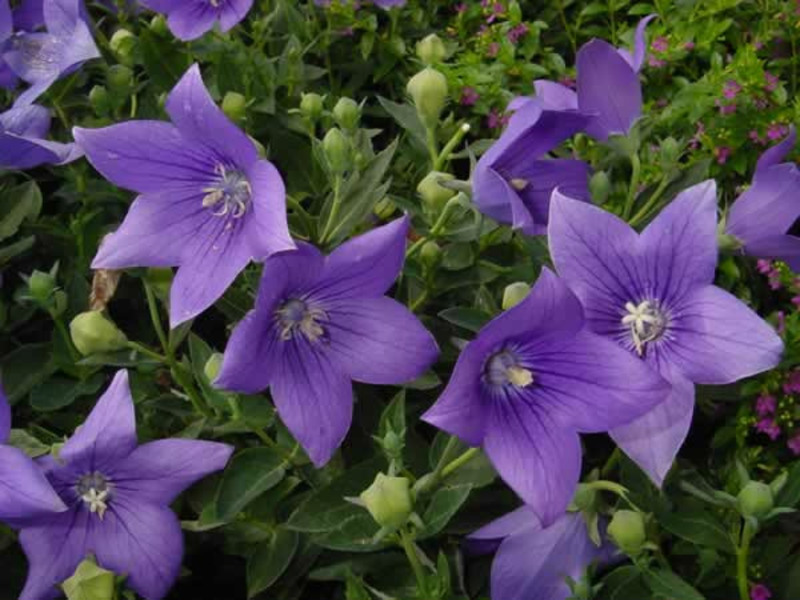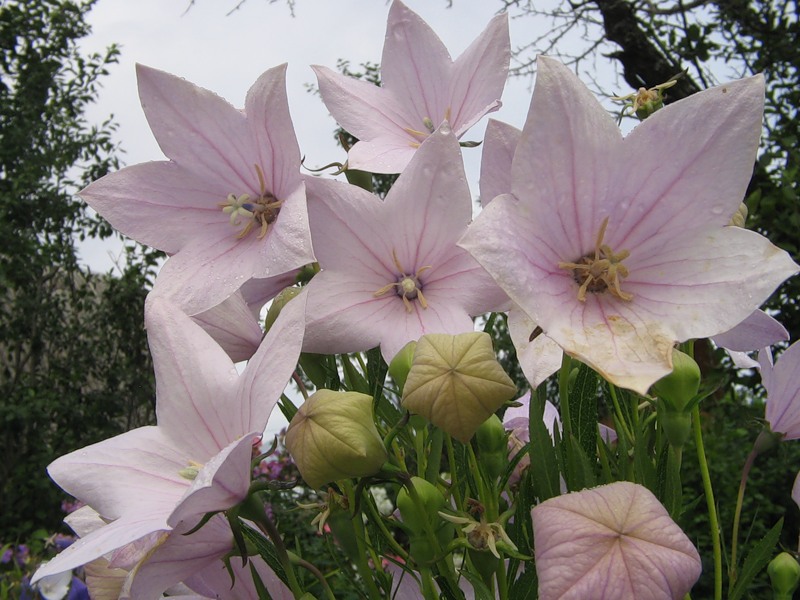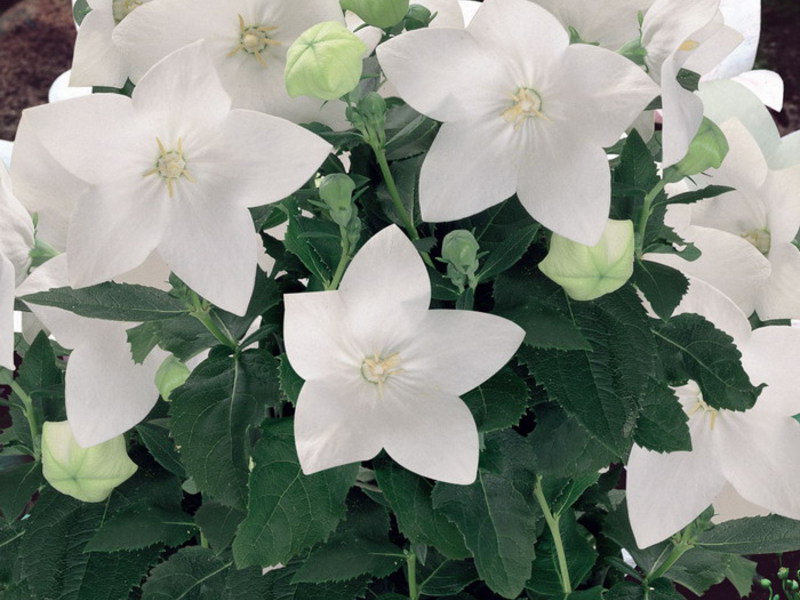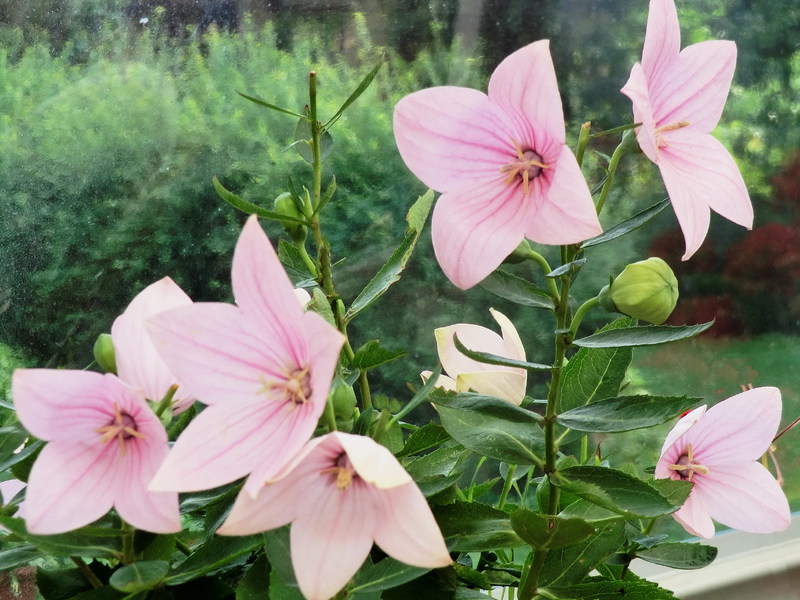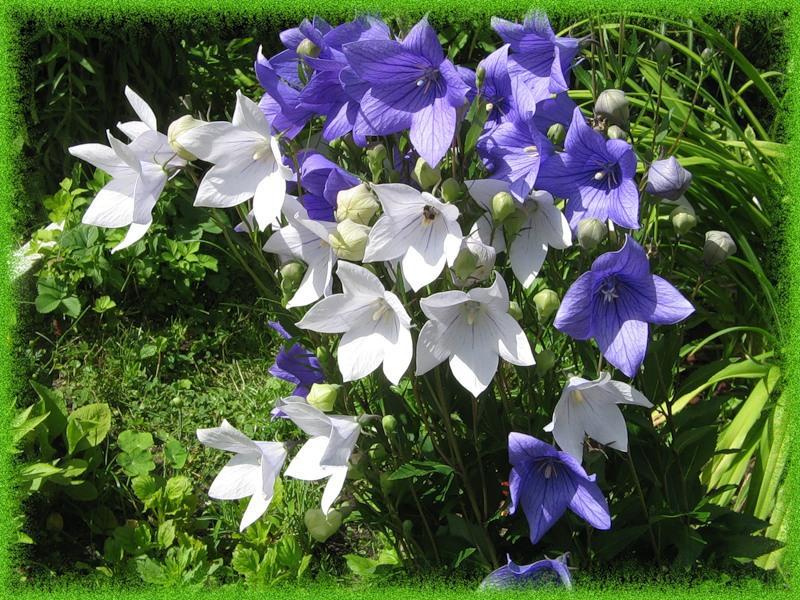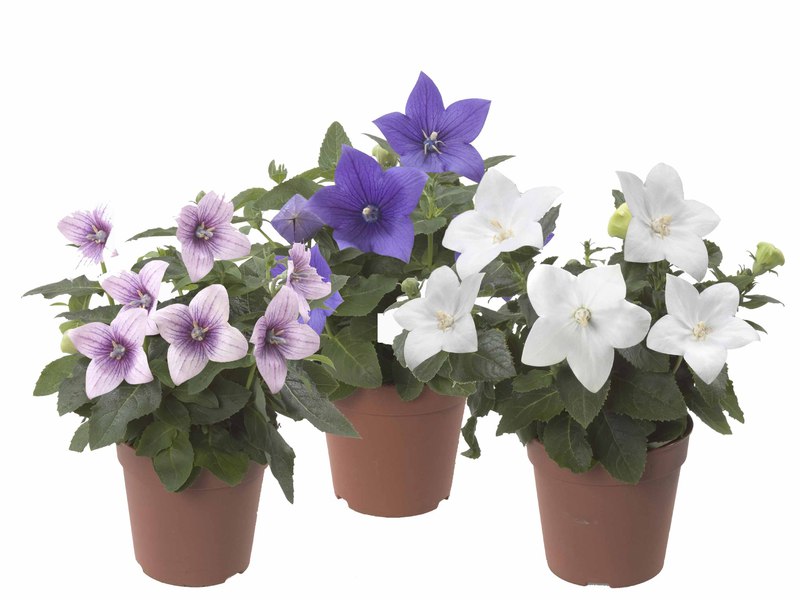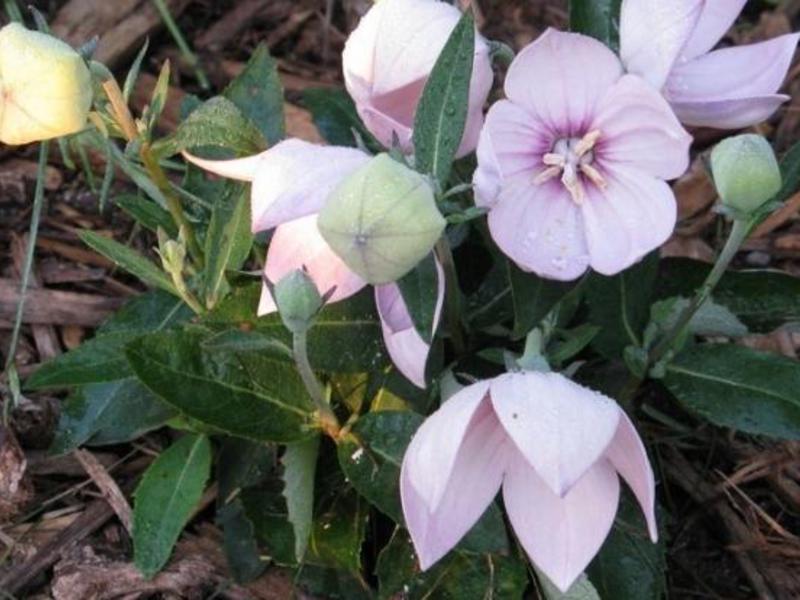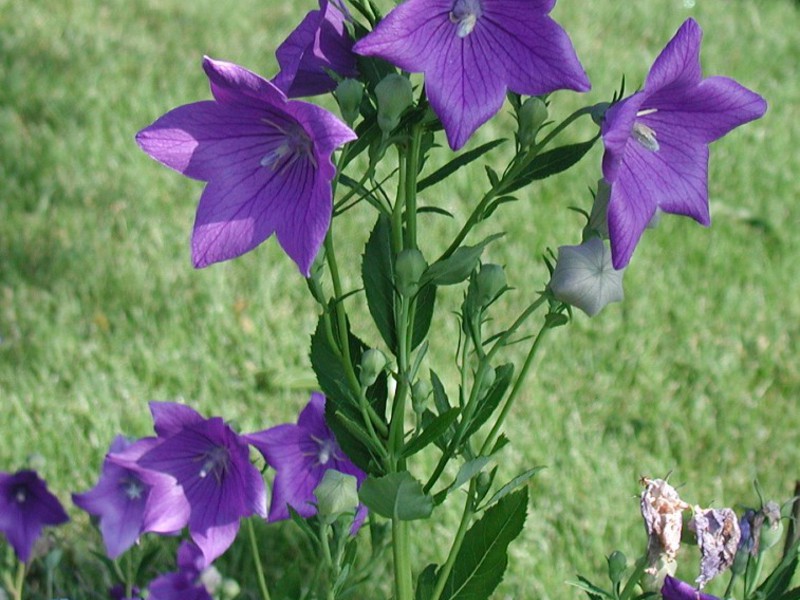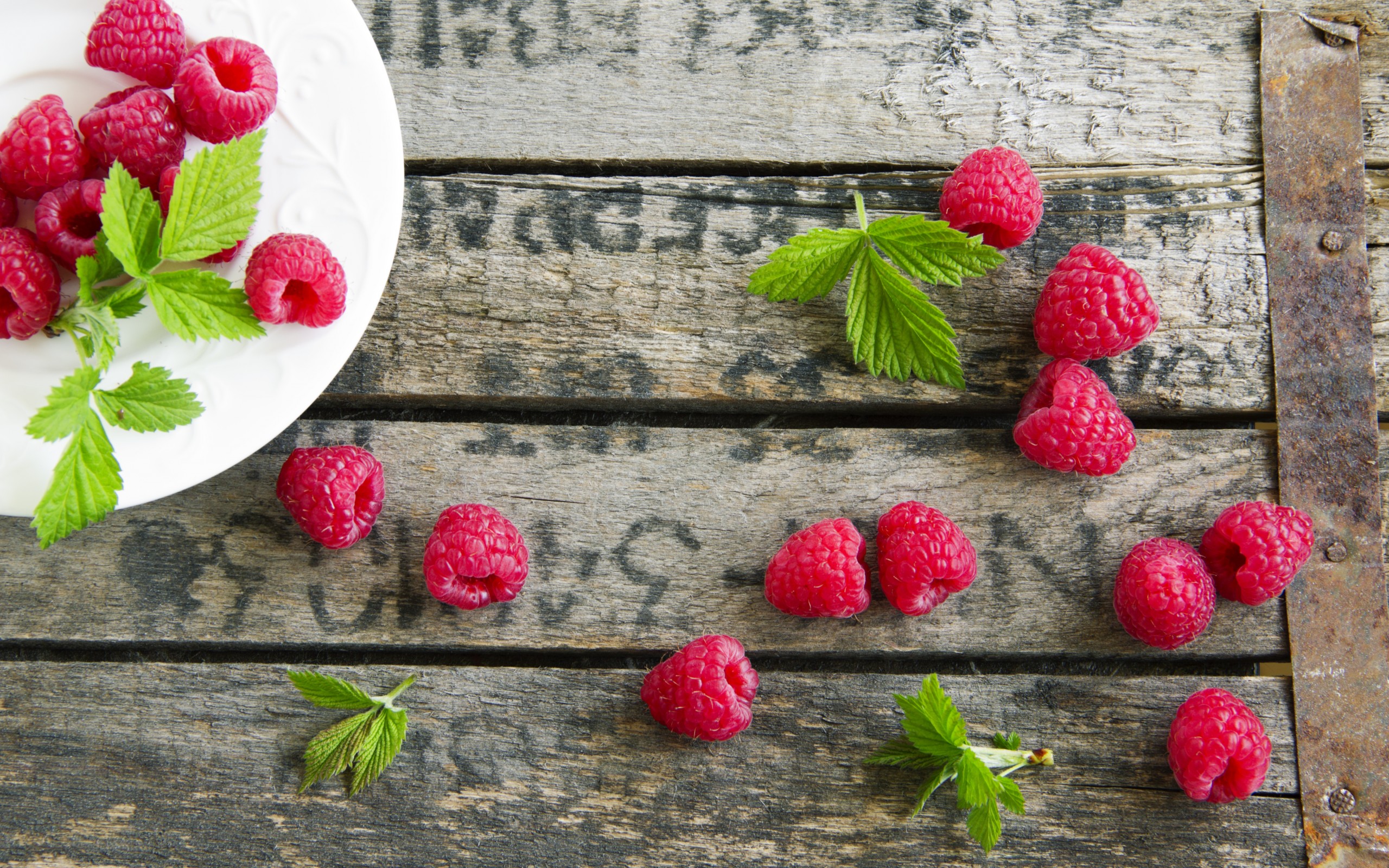In flower beds and in flower beds of many garden plots, you can see delicate bells. This star-shaped plant is called platycodon and is known to many gardeners. Outwardly reminiscent of small lanterns, flowers become the subject of attention not only in the garden, but also on the windowsill. They do not leave anyone indifferent, therefore they are very popular. The plant grown from seeds is quite unpretentious, but when caring for it, you must follow some rules.
Description of the flower, popular varieties
Platycodon belongs to perennial herbaceous plants. Each of its many stems in height can reach from 15 to 80 cm... Bright green narrow leaves, elongated or ovoid, grow along the stem. They have a bluish tint and finely toothed edges.
Single or collected in 3-5 pieces in panicles, large platycodon flowers reach 8 cm in diameter. They can be blue, pink, white or dark purple. The blue petals have a pronounced network of thin veins. The plant blooms from mid-July for two months. Its buds resemble lanterns. The flat, shiny seeds form in egg-shaped capsules.
Popular varieties and their photos
To decorate a flower bed, you can choose one plant variety or make a landscape composition of several types, including most famous:
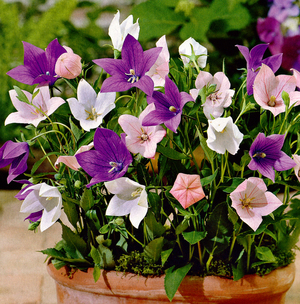 The "Snowflakes" variety is a plant up to 50 cm high. It features semi-double white flowers that look great on the lawn among the grass or in combination with brightly flowering plants.
The "Snowflakes" variety is a plant up to 50 cm high. It features semi-double white flowers that look great on the lawn among the grass or in combination with brightly flowering plants.- The Apoyama cultivar resembles a field bell. It will grow only up to 20 cm and has large leaves. Its wide-open purple-blue flowers seem to look in different directions. Suitable for growing in rockeries and rock gardens.
- The "Fairy Snow" variety is distinguished by very delicate flowers of a white or slightly lilac shade. Each petal has blue streaks. The bush grows up to 80 cm and blooms from June to August.
- Mariesii blue is a very popular variety. The spectacular plant stands out with large blue flowers. With its help, you can make the most original landscape compositions.
- Variety "Shell Pink" is a shrub up to 80 cm high, on the shoots of which large pink flowers with a diameter of 8 cm bloom. Paths along which Platicodon with pink flowers grows look very original.
- Variety "Album" is distinguished by erect stems, growing up to 60-80 cm. Its large white flowers reach 8 cm in diameter. On the petals of some of them you can see blue veins. The plant blooms from June to August and is widely used to decorate various flower beds, adding a touch of freshness to them.
Growing from seeds
Most often, the plant propagates by seeds, which can be immediately sow in open ground before winter or spring. However, experienced florists recommend growing Platicodon from seeds using seedlings. Sowing of Platicodon is carried out in late February or early March.
The seeds require pre-treatment. To do this, they are placed in a gauze bag and soaked for two days in a small container with water. During this time, the seed should swell.
Seedling boxes or other containers filled with earthen mixture... They are prepared from equal parts:
- humus;
- peat land;
- sand.
Seeds are sown in carefully loosened soil. They can be embedded to a shallow depth of only 3-5 mm, or left practically on the surface. The soil is moistened with a spray gun with water at room temperature. The containers are covered with foil and placed in a warm place with air temperature within 20-22 degrees... The soil is ventilated every day and checked for moisture.
Seedlings appear in one to two weeks. The seedling boxes are immediately placed in a well-lit area and the foil is removed. Seedling care consists in watering as needed, after which the soil must be loosened. When three or four leaves appear, the seedlings dive into pots with a diameter of 10 cm.They will be ready for planting in open ground in June.
Landing in open ground
 The flower belongs to light-loving plants, therefore, well-lit or semi-shady areas are chosen for it. This takes into account the fact that the root system of Platicodon is very delicate and fragile, and does not tolerate transplants. Therefore, a permanent place is immediately chosen for him, on which the plant will grow within 7-10 years.
The flower belongs to light-loving plants, therefore, well-lit or semi-shady areas are chosen for it. This takes into account the fact that the root system of Platicodon is very delicate and fragile, and does not tolerate transplants. Therefore, a permanent place is immediately chosen for him, on which the plant will grow within 7-10 years.
The soil should be well-drained, fertile and loose. Platycodons do not like accumulation of moisture in the ground. The bushes will grow and bloom well on loams of a neutral reaction. When digging, additional sand is added, and when planting half a glass of wood ash and a tablespoon of complex fertilizers.
In order not to damage the roots, the transplant is carried out very carefully. From the pot to the ground, the plant, along with a lump of earth, is transferred using a garden spatula. The holes should be spaced 25-30 cm apart. Their volume should be slightly larger than the volume of the pot in which the seedlings were grown.
Before planting, young plants are watered, and only then are they removed from the pot. Otherwise a dry ball of earth in your hands can crumble and damage roots... Some gardeners, to mitigate the stress of replanting, dip the seedling completely into the water, and only then remove it along with the earthy clod from the pot. The planted bush is watered and the soil around it is mulched. In this case, the soil will not dry out and crack in hot weather and, most importantly, there will be almost no weeds.
Care features
In the first days of the week after planting, Platicodone requires special care. Plants are watered at this time every day. Subsequently, watering is done once every two days. After each moistening, the soil must be loosened and, if the area is not covered with mulch, weeds must be removed. When watering, it is necessary to ensure that there is no stagnant water around the bushes, otherwise the roots of the plant may begin to rot. However, Platicodone does not tolerate overdrying.
When caring for Platicodon, plant feeding is required once a month complex fertilizers for flowering plants... In the third year of growth, and sometimes even earlier, the bushes begin to stretch out. To make them compact and beautiful again, they can be sprayed from a sprayer with special growth-retarding agents, or pinched from time to time. Elongated platycodons are tied to a support or to each other so that the flower garden does not lose its decorative effect.
To increase the duration of the flowering of Platycodon, withered and faded flowers must be regularly cut off.
Pests and diseases of platicodon
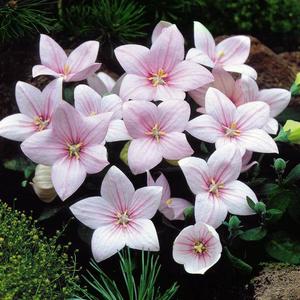 The plant is distinguished by the fact that it is practically not susceptible to disease. The already fragile root system of Platycodon can only be damaged by moles or mice. You can get rid of them in several ways:
The plant is distinguished by the fact that it is practically not susceptible to disease. The already fragile root system of Platycodon can only be damaged by moles or mice. You can get rid of them in several ways:
- Spread the bait with the poisoned groats over the area. However, this method is only good for getting rid of mice.
- To drive the rodents out of the burrow, you can blow smoke into it.To do this, one end of the rubber hose is connected to the exhaust pipe of the chainsaw, and the other is lowered into the underground passage. A working chainsaw will start throwing smoke into the hole and smoke out its inhabitants.
Rarely, platycodones are affected by gray mold... The disease occurs as a result of waterlogging of the soil. Plants planted on poorly drained soil also suffer from it. To combat gray mold, it is often enough to start regularly loosen the soil around the bush. If this method does not help, heavily affected bushes are treated with a 1% Topsin-M solution or a 2% Fundazole solution. After ten days, the treatment will need to be repeated.
If we take into account in advance all the features of caring for Platicodon, then its cultivation in a garden plot will seem simple. A flower that does not require transplants will grow, bloom, and will not lose its decorative effect in one area for several years.
